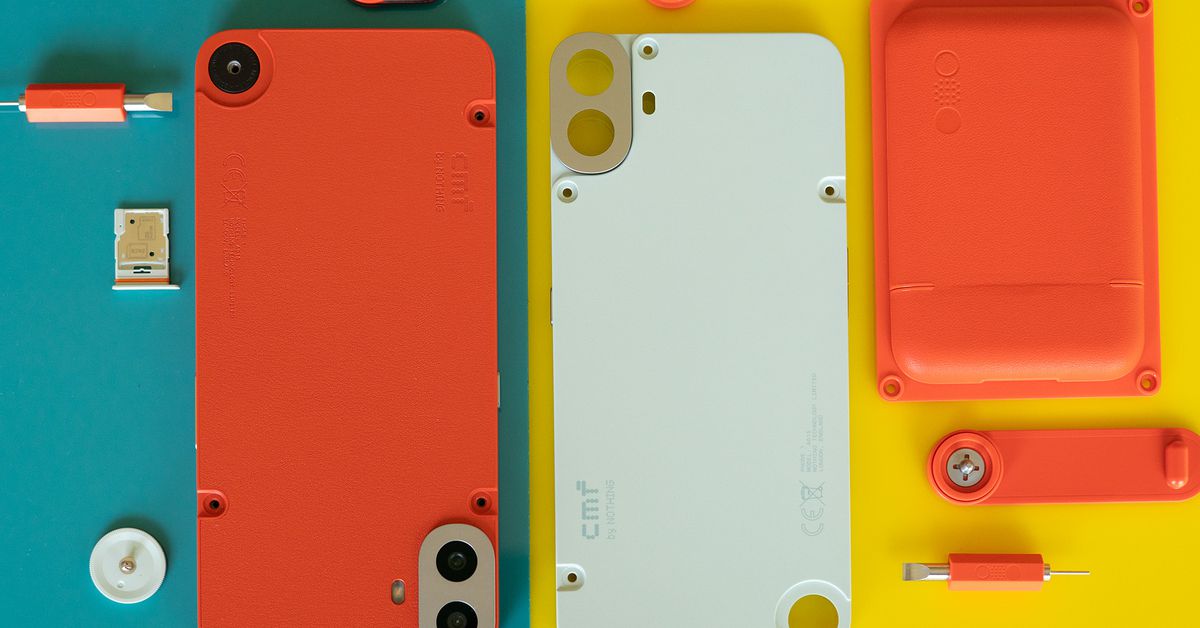I’ve never had so much fun taking a phone apart.
That’s a misleading statement; I haven’t really thought about it. each phones apart, but when CMF’s Phone 1 came out, that was the first thing I did. Because this one, my friends, is built differently. It won’t be widely available in the US, but if you’re so inclined, you can get one through Nothing’s beta program — and at $199, that’s seriously tempting.
CMF, Nothing’s budget-conscious yet extremely style-driven sub-brand, delivers its first phone, the aptly named Phone 1. While it shares a name and an operating system with Nothing’s first own-brand phone, it brings a new modular approach to phone customization. Why put a different case on your phone when you can put a whole new phone on your phone?
The concept is simple: it’s a phone, but the back panel comes off so you can swap it out for another. Each replacement comes with everything you need to do the job, including its own small screwdriver, screws, and a color-matched SIM tray.
There’s also a circular accessory port cover in the bottom corner of the phone. While it resembles the control button on CMF’s neckband earbuds, it offers no functional use beyond protecting the accessory port. At launch, CMF will offer three accessories: a lanyard, a wallet, and a kickstand, each priced at $25 and coming in a striking orange color.
Those are all sold separately, as are the colorful replacement rear panels, which cost $35 each. In the box, you get a very respectable budget Android phone with a 6.7-inch OLED, 50-megapixel rear camera, a MediaTek Dimensity 7300 chipset, and a generous 5,000mAh battery. It comes with a black panel installed; other options include orange, light green, and blue.
Removing the back panel is easy, but it does require a fair amount of force—enough to break an overly long fingernail, I learned. But that’s probably for the best, because that panel is the thing that stands between your phone’s innards and the rest of the world. Speaking of innards, it’s so strange to see a modern phone so naked and exposed.
Once the phone is safely wrapped up again, you can add accessories. The wallet is actually made up of two parts: a plastic panel with a MagSafe-like magnet embedded in it, and the wallet itself. I’m sure it’s no coincidence that I was able to attach the phone to a MagSafe charging stand using this magnetic mount (though the Phone 1 does not offer wireless charging). You can also attach the kickstand or lanyard while the wallet is in use.
The lanyard is made of a thick, woven fabric. Someone much cooler and younger than me could probably manage carrying their phone with it. And the kickstand seems sturdy enough, although I wish the arm were snug against the phone when not in use. They’re all a bright orange — the gadget color of the year, I think.
1/3
Photo: Allison Johnson/The Verge
Being a budget phone, there are obviously some compromises to consider. There’s no NFC, and the Phone 1 is only splashproof. That’s understandable, given the price and the way the entire back of the phone peels off. Carrier support in the US is also pretty limited. Like the Phone 2A, it works on T-Mobile’s 4G and 5G networks, but only supports Verizon and AT&T’s 4G bands. But for $199? It might just be worth it — if nothing else, it’s a great accessory.
Photography by Allison Johnson / The Verge
